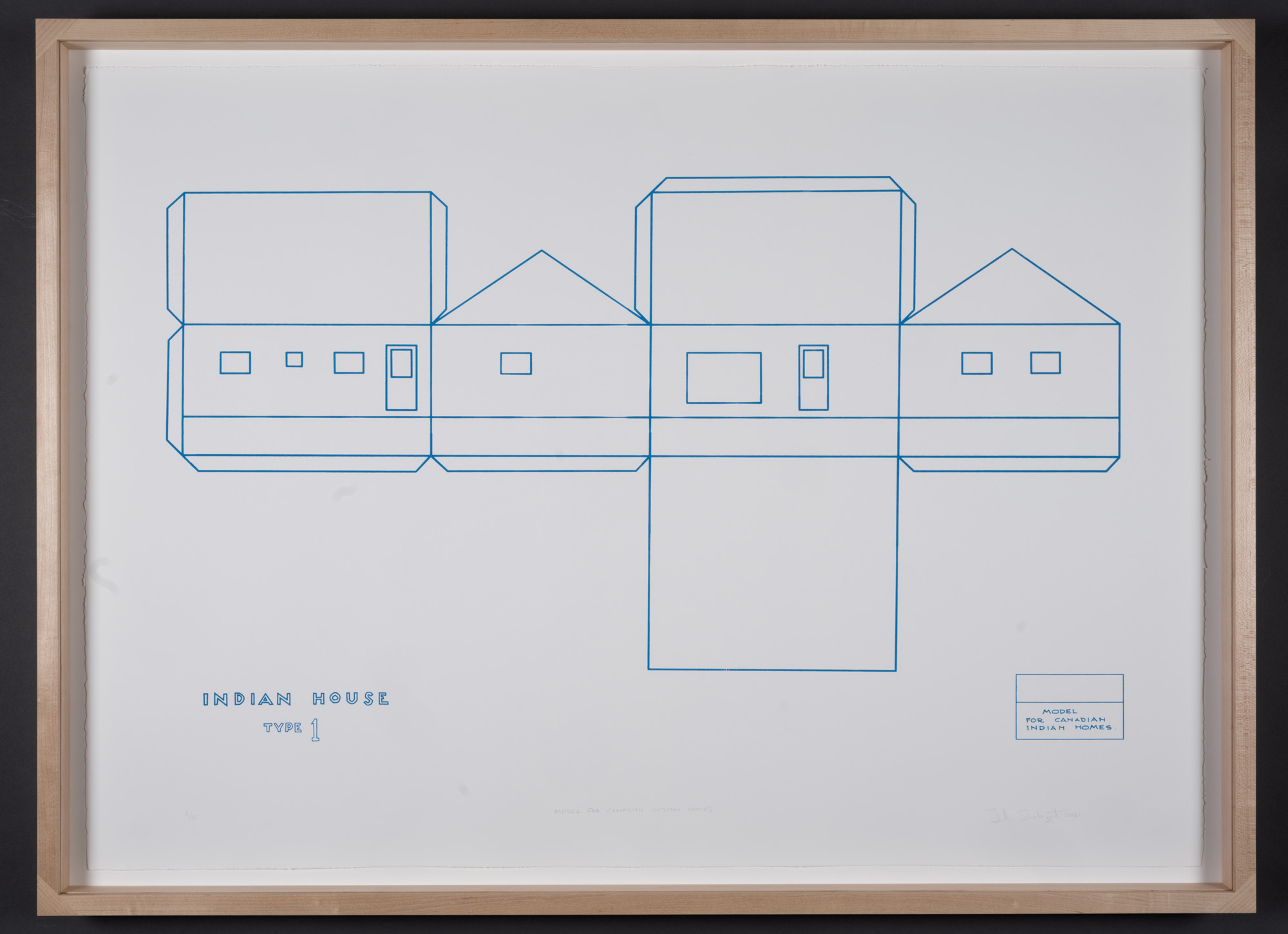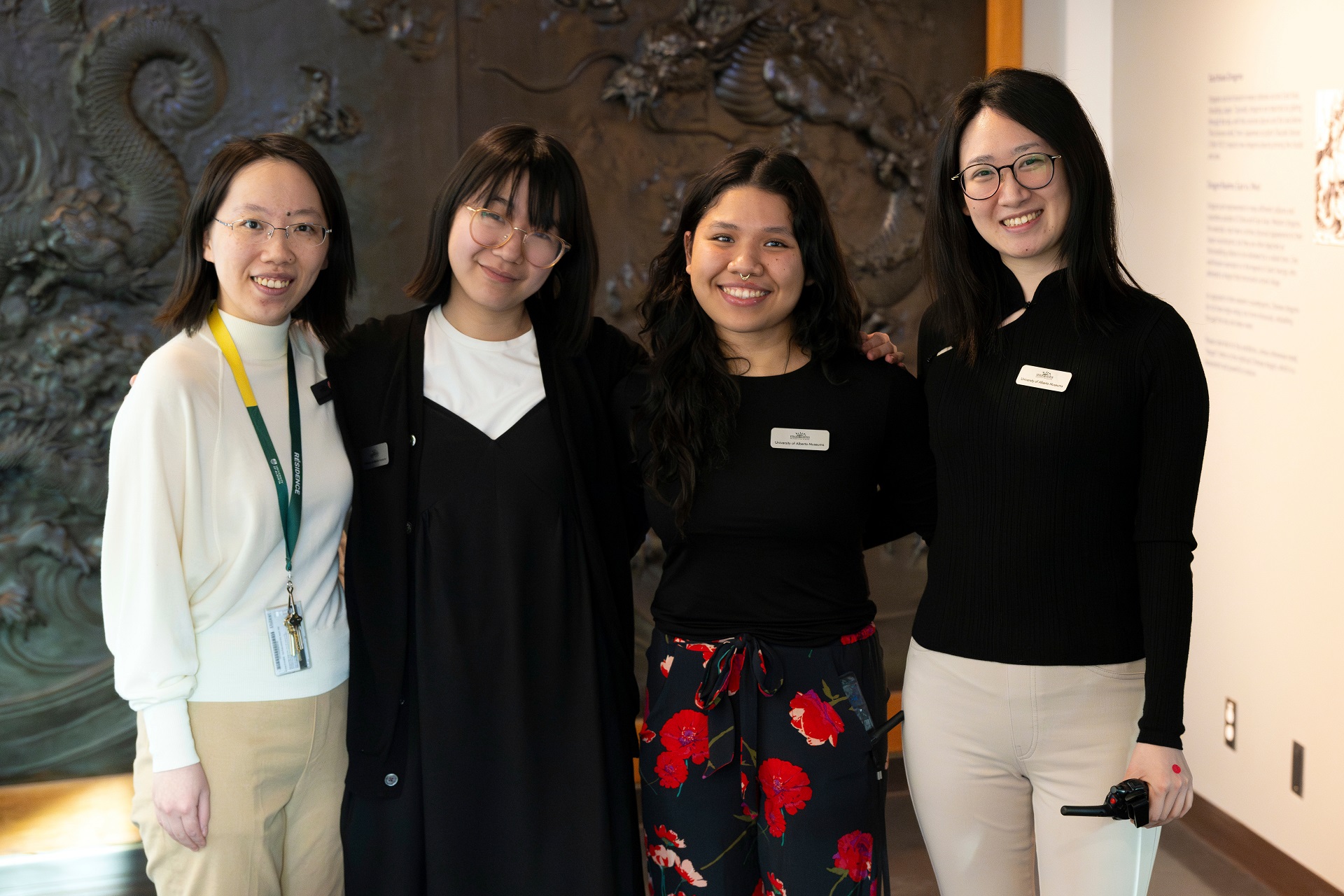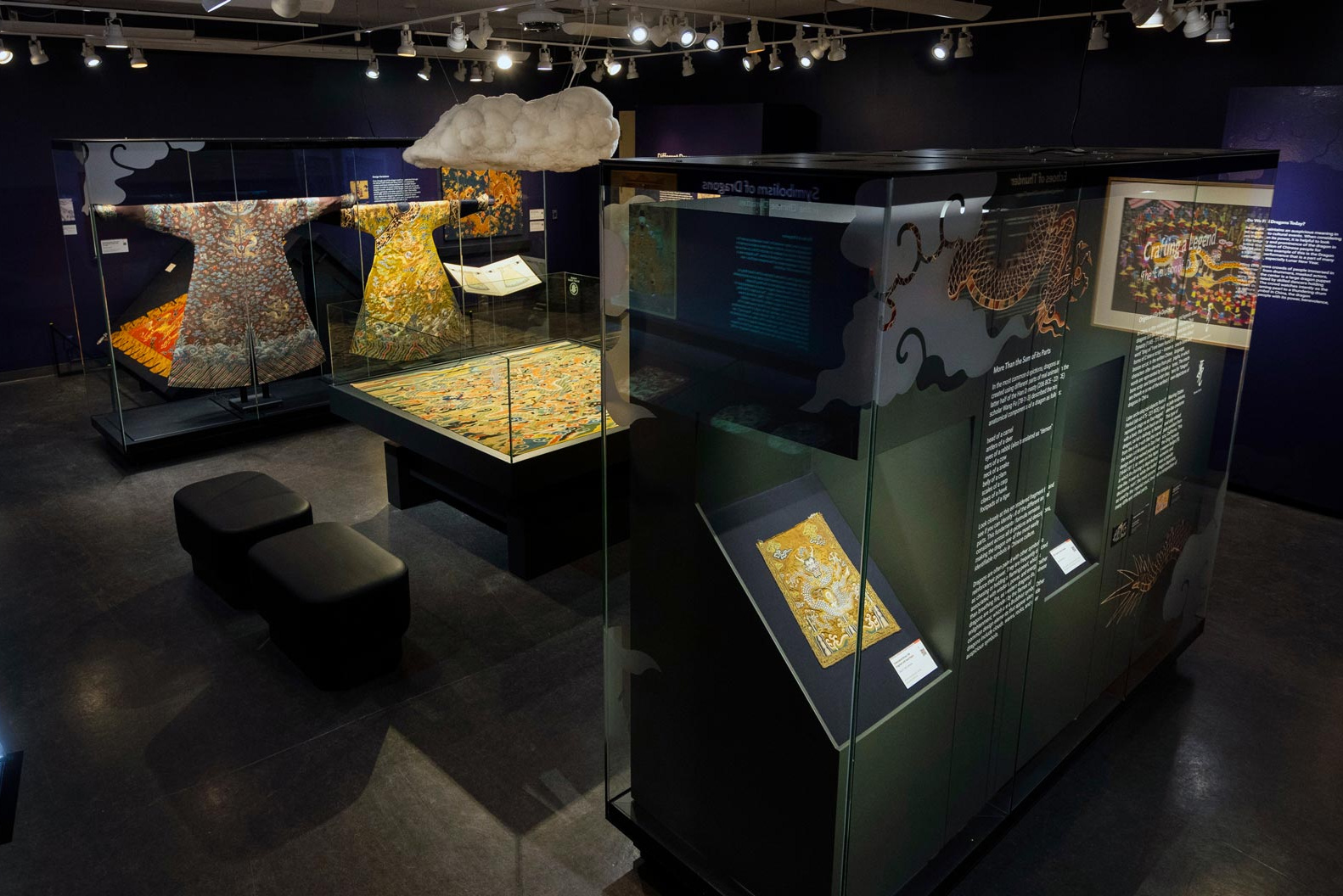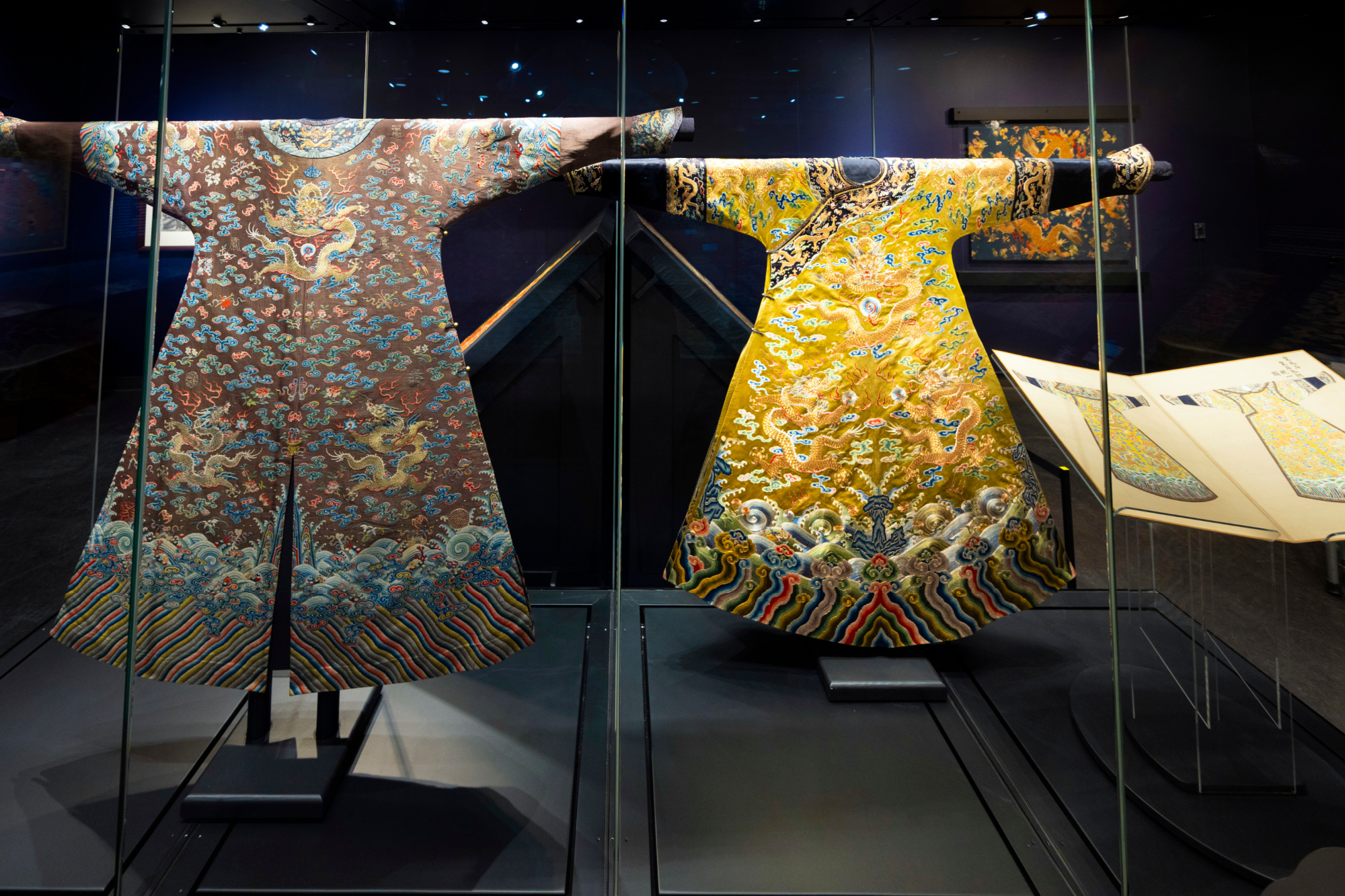Art in Focus: Trip to Toodja by Pitseolak Ashoona
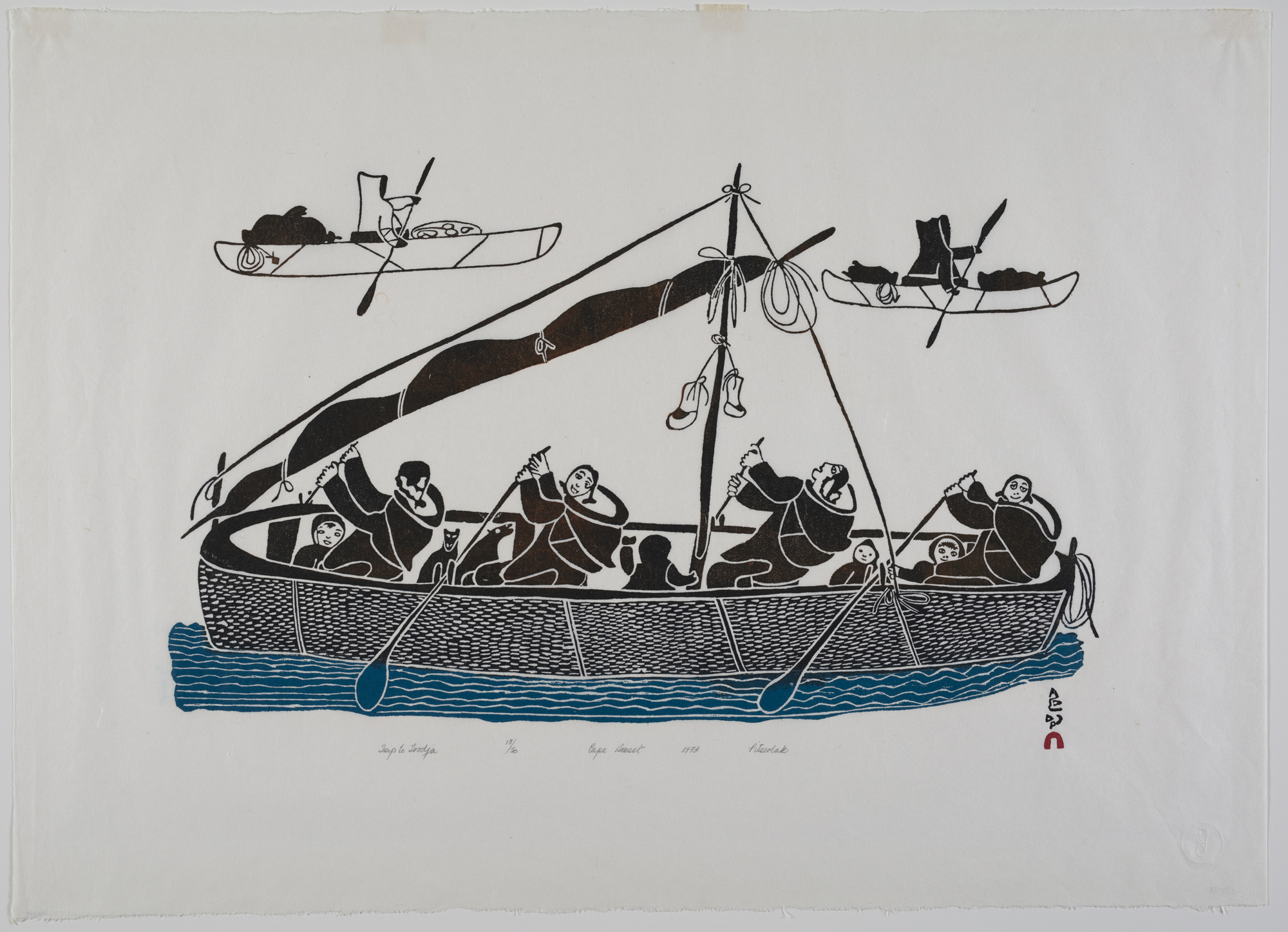
Trip to Toodja,1973; Stonecut print on paper; Pitseolak Ashoona: Born c. 1904, Tujajuak (Nottingham Island), Nunavut, Canada, Died 1983 Kinngait (Cape Dorset), Nunavut, Canada; University of Alberta Museums Art Collection, University of Alberta Museums; Gift of Milton Halvarson; 2008.1.29
In Trip to Toodja (2008.1.29), the rich heritage of traditional Inuit culture is explored by artist Pitseolak Ashoona.
Born sometime between 1904-1907, Pitseolak Ashoona’s prints and drawings are known for depicting traditional Inuit life. In her biography Pictures Out of My Life, she recounts the journey her family made from the coast of arctic Québec to Tujakjuak (Nottingham Island) where she was born, then moving on to Tuja, a camp on Akudluk (Salisbury Island) and then on to Qikiqtaaluk (Baffin Region).1 She describes how the trip was undertaken in a sealskin boat like the one seen in Trip to Toodja.
Sealskin boats were referred to as women’s boats since it took many women to make one, and also because women rowed the sealskin boats while men paddled in the kayaks alongside. These women’s boats were made of wooden frames covered with sealskins and like the boat in the image, some even had sails made from whale intestines. In Ashoona’s telling of that early journey across the water as an infant, she points out that her family had no such sail and of course no motors. Instead they rowed the entire distance of more than 300 kilometers. Ashoona writes of that particular journey that, “these were long journeys and dangerous too, when the waters were rough, but I didn’t know - I was still being carried on the back of my mother.”2
Pitseolak Ashoona continued to traverse these same areas with her husband and children in the same semi-nomadic ways followed by Inuit for thousands of years. She explained, “this was the old Eskimo way of life; you couldn't give up because it was the only way. The old life was a hard life but it was good. It was happy.”3
Ashoona’s life spanned the small window of time where traditional Inuit life and colonization of the North overlapped. After her husband’s death, her semi-nomadic lifestyle mostly ended. She went on to find recognition as an accomplished and celebrated artist with encouragement from James Houston who founded the West Baffin Eskimo Cooperative. Now known as Kinngait Cooperative, this studio supports Inuit artists in earning an income from their work.
The resiliency, fortitude, and ingenuity of Inuit are evident in her artwork. She captures these traits by focusing almost exclusively on her happy memories and rarely on the hardships of her life. Although she passed away in 1983, Pitseolak Ashoona’s artwork continues to provide us with a window into the lives and experiences of Inuit.
This print is one of seventy-five works of art by Pitseolak Ashoona in the permanent art collection of the University of Alberta Museums.
1 Christina Lalonde, Pitseolak Ashoona, Life and Work, (Toronto: Art Canada Institute, 2015), 4.
2 Dorothy Harley Eber and Pitseolak Ashoona, Stories Out of My Life (Montreal: McGill University Press, 2003), 14.
3 Ibid., 64.
This web story is part of the University of Alberta Museums Art Collection Spotlight Series, a collection of web stories aimed to share works of art from the University of Alberta Museums Art Collection with the world. Posted monthly, these stories connect works of art in the Collection to important matters on our campus and in our world.
